If you have additional questions please visit the help center.
Frequently Asked Questions
What is the NIH Kids First Program?
Named after a young advocate from Northern Virginia, the NIH Common Fund’s Gabriella Miller Kids First Pediatric Research program visualizes a future with less childhood cancer and congenital disorders. The Kids First program is building a cloud-based genomic data resource to share data and accelerate collaborative research, leading to better patient and family prevention, diagnosis, and treatments. Kids First helps researchers uncover new insights into the biology of childhood cancer and congenital disorders, including discovering shared genetic pathways between these disorders, by leveraging quality data, cloud-based tools, and robust resources.
To learn more about this program, read the Frequently Asked Questions.
Why was the Kids First Data Resource Center created?
In 2015, the NIH launched Gabriella Miller Kids First Data Resource Center (Kids First) to equip scientists and researchers with the ability to accelerate their exploration through:
- Data: Serve as a centralized database to assemble diverse data sources together into one location.
- Tools: Provide analytical tools for analyzing large, complex data sets encompassing genetic sequence and clinical data.
- Resources: Provide easy access to and query disparate data sets by researchers without bioinformatics expertise.
To learn more about Gabriella Miller, the inspiration for the Kids First DRC, please visit the About page.
Why Focus on Childhood Cancers and Congenital Disorders Together?
Both congenital disorders and cancer are leading causes of death in childhood. It makes sense to study these conditions together since shared genomic variants and signaling pathways have been identified, and a child born with a congenital disorder faces a higher risk of also having cancer.
The Kids First Data Resource Center aggregates genetic and clinical data from childhood cancer and congenital disorder patient cohorts together so that researchers can mine the data to uncover entirely new ways of understanding childhood cancer and congenital disorders. Analyzing genetic sequence data from children with childhood cancer and congenital disorders together may lead to the discovery of new genetic pathways that would not have been uncovered had the analysis only been performed using childhood cancer data alone, or vice versa. These new pathways may help researchers discover novel treatments.
What data is available through the Kids First DRC portal?
Users can review available studies, data types, and curated clinical data through this publicly available portal and request access to individual-level, multifaceted data and a robust variant exploration tool.
How do I access the data?
This data is available to any researcher. To get started, sign up to use the portal here.
How much data is available to researchers?
This collection is among its most extensive pediatric data resources and remains a unique resource for pediatric cancers and congenital disorders data. The Kids First Portal currently contains over 100,000 records. It connects with CAVATICA, a cloud-based analysis and sharing platform.
How does Kids First help researchers and healthcare providers better understand childhood cancer and rare diseases?
The DRC is a tool to help people worldwide work together and advance pediatric research. Users can get and analyze the data in real time through an online portal. Ultimately, the Kids First DRC will help uncover new insights into the biology of childhood cancer and congenital disorders or develop new computational methods for analyzing genetics data.
Who can access participant data? How can I trust that my data will be used responsibly by researchers?
Kids First takes many steps to protect our participants’ privacy. All health records and other data added to the DRC are “de-identified.” This means the data is not linked to any one person, and any details that can be traced back to a specific person are erased. Your name, address, and other personal “identifying” information will not be shared with scientists or anyone else. Those who access the data are prohibited (as part of the agreement to access the data) from attempting to identify or contact individual participants or groups from whom data were collected or generate information that could allow participants’ identities to be readily ascertained.
How can organizations partner with Kids First to support the research?
If you would like to learn more about how you or your organization can become a partner in research at Kids First, reach out to our team by emailing us at info@kidsfirstdrc.org
Kids First Partners are nationally known organizations and individuals committed to supporting the mission and work of DRC. They are advocates, nonprofits, and other groups working in childhood cancer and rare disease research, support, healthcare, and more.
What is the Kids First cloud credits program?
The Kids First Cloud Credits Pilot Program provides resources that enable researchers to conduct cloud-based analyses by accessing Kids First data and utilizing the tools available through the Kids First Data Resource (DRC). This program is available to all researchers using Kids First Data Resources. To get started, visit this link.
I have more questions. Where can I find additional information?
For additional information, feel free to email the Kids First team at info@kidsfirstdrc.org.






